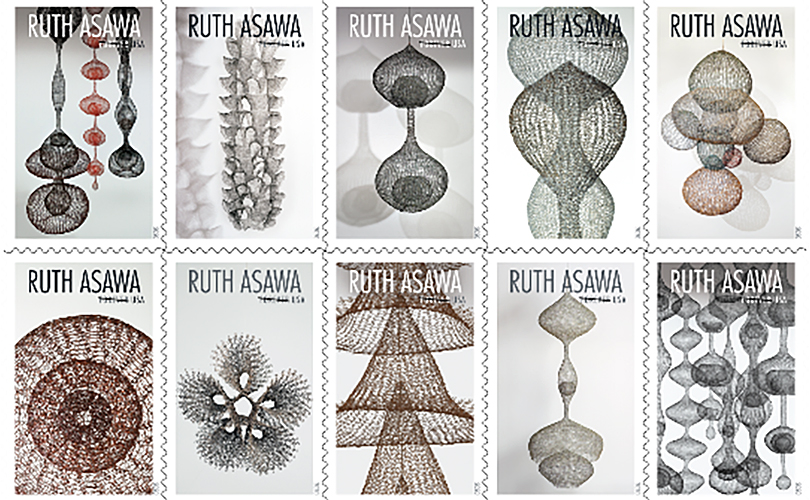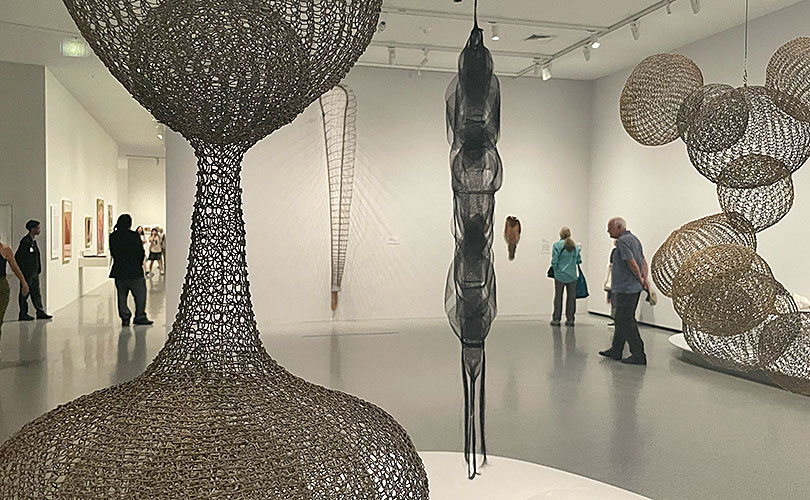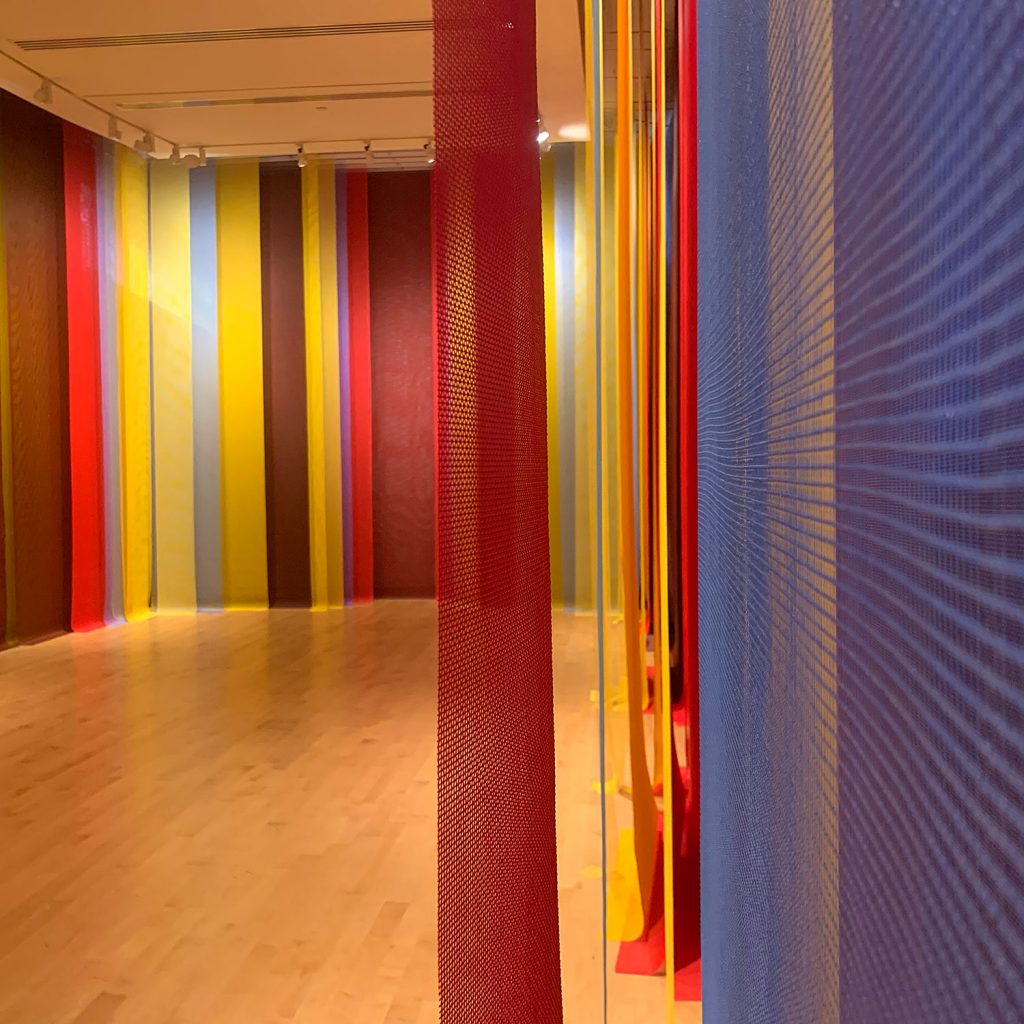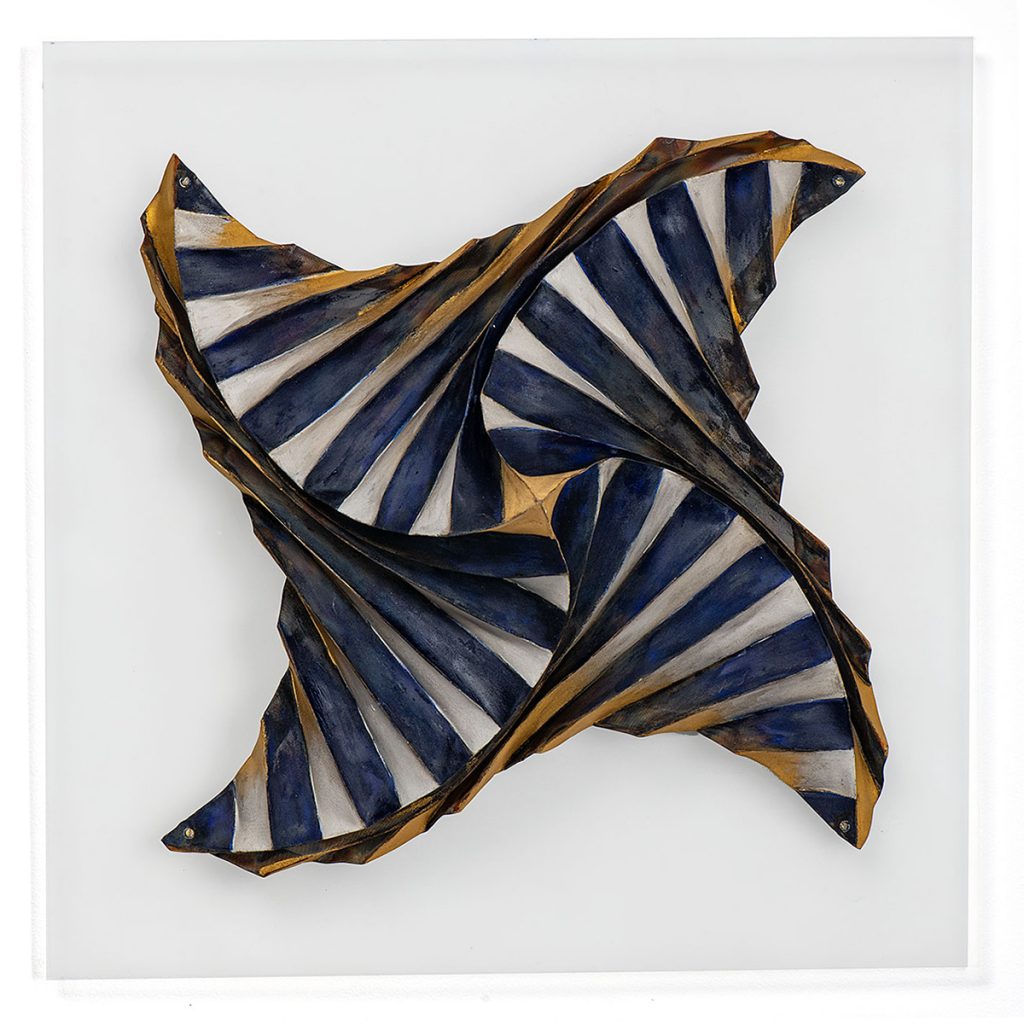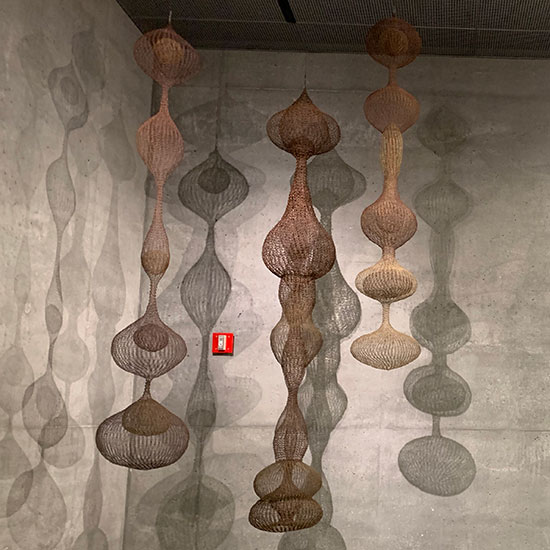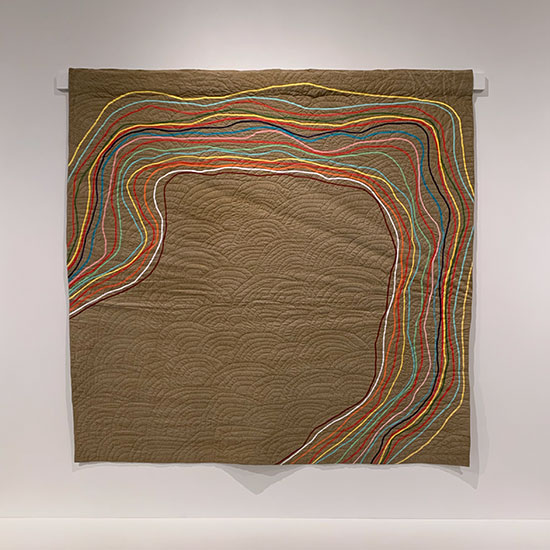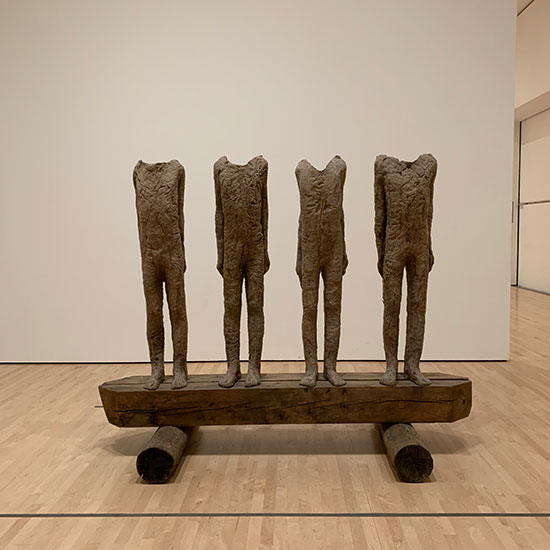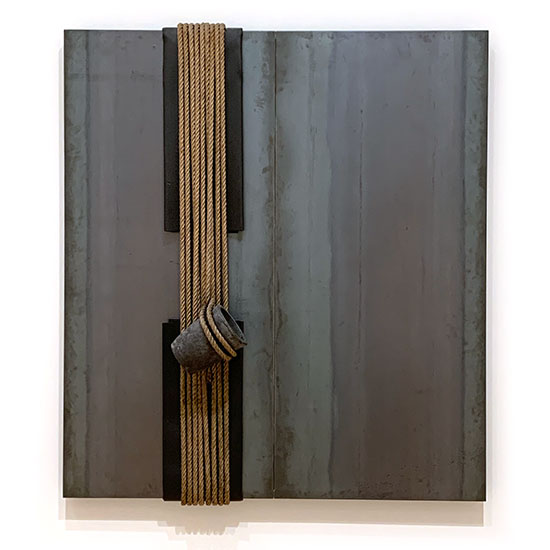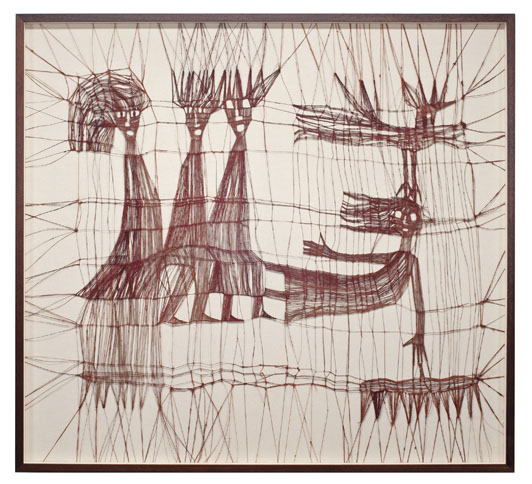It’s an exciting art autumn in the US. Below, the 411 on several exhibitions worth visiting., coast to coast
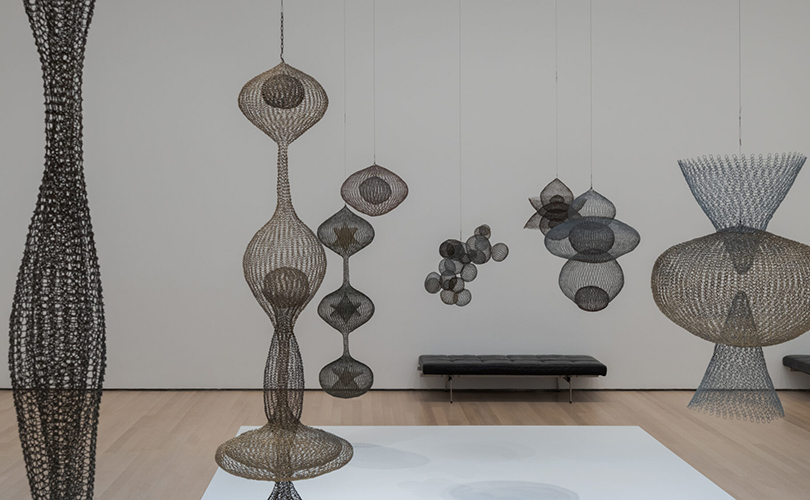
Ruth Asawa: Retrospective
Through February 7, 2026
Museum of Modern Art
11 West 53rd Street
New York, New York
https://www.moma.org/calendar/exhibitions/5768
An expansive retrospective of the eloquent work of Ruth Asawa has traveled to New York from San Francisco MoMA. The exhibition coincides with the artist’s 100 birthday, the exhibition includes some 300 objects that highlight the core values of experimentation and interconnectedness pervading all dimensions of Asawa’s practice. The retrospective spans 60 years of Asawa’s ambitious career, presenting a range of her work across mediums, including wire sculptures, bronze casts, paper folds, paintings, and a comprehensive body of works on paper. The artworks are accompanied by a rich array of archival materials—photographs, documents, and ephemera—that illuminate her public commissions, art advocacy, and meaningful, lasting relationships with members of her community.
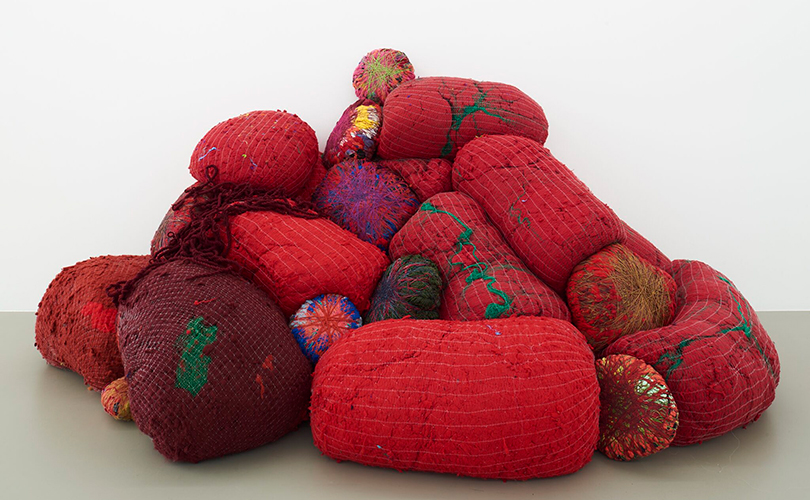
New Work: Sheila Hicks
Through August 9, 2026
San Francisco Museum of Modern Art
151 3rd Street
San Francisco, California
https://www.sfmoma.org/exhibition/new-work-sheila-hicks/
Still at SFMoMA is Sheila Hicks’s first solo exhibition there, a site-specific installation in the museum’s New Work gallery. According to the museum, the works are inspired by objects, textures, and patterns observed in her adopted city or in her migratory life. Each draws from places with personal significance, from the cobblestones of her courtyard to the towering lighthouses of the rocky island of Ouessant, France and its treacherous and rugged landscape.
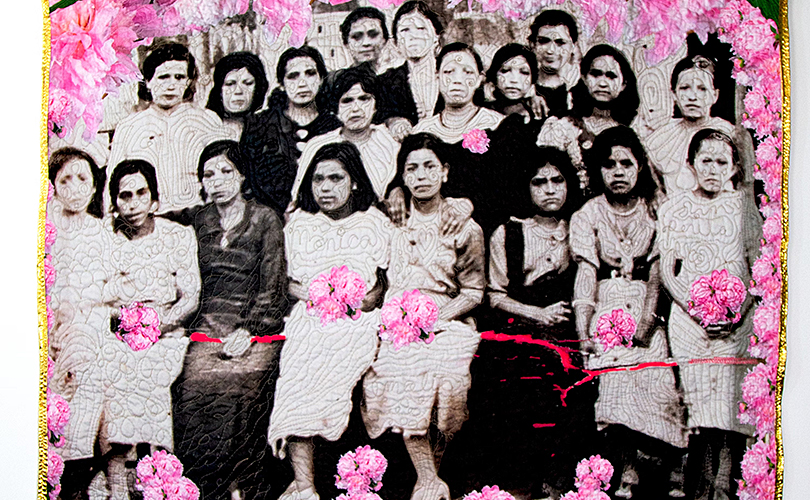
On Loss and Absence: Textiles of Mourning and Survival
Through March 15, 2026
Art Institute of Chicago
159 East Monroe Street
Chicago, Illinois
https://www.artic.edu/exhibitions/9772/on-loss-and-absence-textiles-of-mourning-and-survival
In the center of the country is a themed exhibition at the Art Institute in Chicago. Drawn primarily from the museum’s collection, On Loss and Absence brings together over 100 objects from diverse cultures dating from antiquity to today to reveal the ways people use textiles to sustain spiritual beliefs, understand death, cope with grief, remember those who have passed, and heal from trauma, both personally and collectively.
Back on the East Coast, there are five exhibitions of interest — two in Connecticut, two in New York and one in New Jersey.

from Stitching Time. Photo Maureen Kelleher. Fairfield University Art Musuem.
Stitching Time: The Social Justice Collaboration Quilts Project
Through December 13, 2025
Fairfield University Art Museum
1073 Benson Road
Fairfield, Connecticut
https://www.fairfield.edu/museum/exhibitions/current-exhibitions
At the Fairfield University Art Museum, Stitching Time features 12 quilts created by men who are incarcerated in the Louisiana State Penitentiary, also known as Angola Prison. These works of art, and accompanying recorded interviews, tell the story of a unique inside-outside quilt collaboration. The exhibition focuses our attention on the quilt creators, people often forgotten by society when discussing the history of the US. criminal justice system. Also on view in the gallery will be Give Me Life, a selection of works from women artists presently or formerly incarcerated at York Correctional Institution, a maximum security state prison in Niantic, CT, courtesy of Community Partners in Action (CPA).

Jeremy Frey: Woven
Through October 26, 2025
The Bruce Museum
1 Museum Drive
Greenwich, Connecticut
https://brucemuseum.org/exhibitions/jeremy-frey-woven/?gad_source=1&gad_campaignid=19816342960&gbraid=0AAAAADFvx1CiuOUzWvTKKQPD8aRSirAut
You have just a few days to see the first major retrospective of Jeremy Frey’s work. Jeremy Frey: Woven presents a comprehensive survey — 50 baskets — from 20 years of Frey’s prolific career. A seventh-generation Passamaquoddy basket maker and one of the most celebrated Indigenous weavers in the country, Frey learned traditional Wabanaki weaving techniques from his mother and through apprenticeships at the Maine Indian Basketmakers Alliance. While Frey builds on these cultural foundations in his work, he also pushes the creative limits of his medium, producing conceptually ambitious and meticulously crafted baskets that reflect not only his technical skill as a weaver but also his profound ecological knowledge of and connection to the Passamaquoddy ancestral territory of the Northeastern Woodlands.
In New York City there are two opportunities to celebrate the work of remarkable artist Kay Sekimachi, who turned 99 last month.
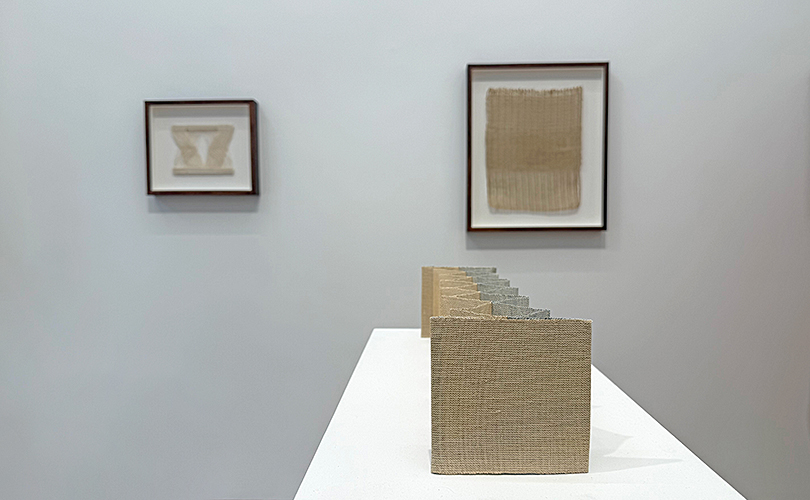
Kay Sekimachi: a personal archive
Through November 1, 2025
Andrew Kreps Gallery
394 Broadway
New York, New York
https://www.andrewkreps.com/exhibitions/kay-sekimachi2
This exhibition of works by the Berkeley-based artist Kay Sekimachi, was organized in collaboration with browngrotta arts. It includes rare, early works from Sekimachi’s personal archive — weavings and assemblages. The exhibition is the first of the artist’s work in New York since 1970.

Sixties Surreal
Through January 19, 2026
Whitney Museum of Art
99 Gansevoort Street
New York, New York
https://whitney.org/exhibitions/sixties-surreal
One of Kay Sekimachi’s innovative and celebrated monofilament weavings is included in Sixties Surreal at the Whitney. Sixties Surreal is an ambitious, scholarly reappraisal of American art from 1958 to 1972, encompassing the work of more than 100 artists. This revisionist survey looks beyond now canonical movements to focus instead on the era’s most fundamental, if underrecognized, aesthetic current—an efflorescence of psychosexual, fantastical, and revolutionary tendencies, undergirded by the imprint of historical Surrealism and its broad dissemination. The exhibition is accompanied by a comprehensive catalog and a playlist.
And in New Jersey …

Toshiko Takaezu: Dialogues in Clay
October 31, 2025 – July 5, 2026
Princeton University Art Museum
Princeton University Campus
Princeton, NJ
https://artmuseum.princeton.edu/exhibitions-events/exhibitions/toshiko-takaezu-dialogues-clay
The groundbreaking ceramic artist Toshiko Takaezu (1922–2011), who taught at Princeton University for almost three decades will be celebrated in Toshiko Takaezu: Dialogues in Clay beginning October 31st. Drawing from the Museum’s deep holdings of Takaezu’s ceramics, Dialogues in Clay explores the artist’s experimental practice, including her signature “closed” forms and painterly glazing. Placing Takaezu’s sculptures in conversation with the work of teachers and contemporaries who embarked on parallel pathways of innovation—including Helen Frankenthaler, Maija Grotell, Robert Motherwell, Isamu Noguchi, Lenore Tawney, and Peter Voulkos,— alongside reflections by her students, the exhibition positions Takaezu as one of the most important ceramic artists of the twentieth century.
Much to Enjoy!

